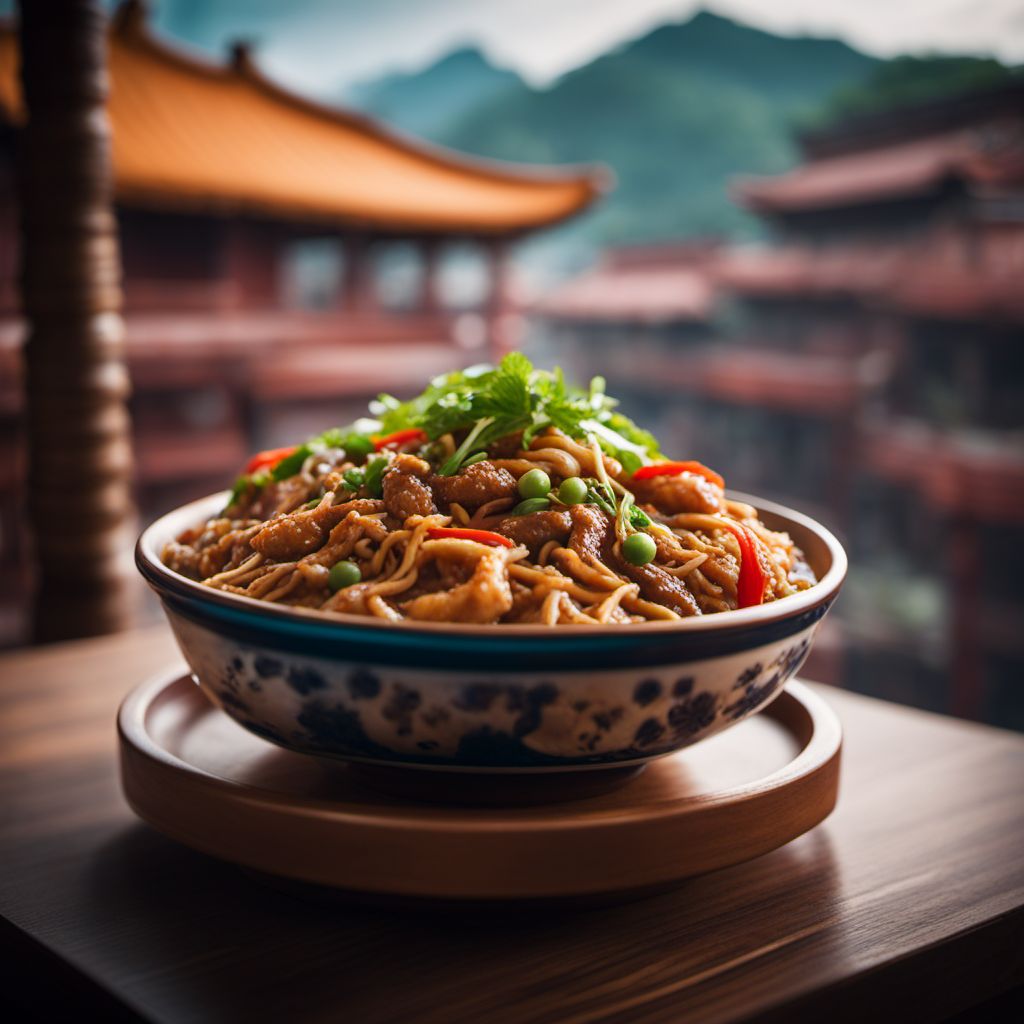
Cuisine
Hakka cuisine
Hakka cuisine is known for its bold and hearty flavors. It is characterized by the use of preserved meats, such as salted fish and cured pork belly, as well as pickled vegetables and tofu. The cuisine also features a variety of stir-fried dishes, soups, and stews. Hakka cuisine is often spicy and uses a lot of garlic and chili peppers.
Typical ingredients
Salted fish, Cured pork belly, Pickled vegetables, Tofu, Garlic, Chili peppers, Ginger, Scallions, Soy sauce, Rice wine, Sesame oil, Dried shrimp, Black beans, Bamboo shoots
Presentation and garnishing
Hakka dishes are often presented in large communal bowls or platters, and are garnished with fresh herbs and vegetables. The cuisine also features a variety of pickled vegetables and condiments, which are used to add flavor and texture to dishes.
Hakka cuisine is also known for its unique tea culture, which involves serving tea with every meal. The tea is often brewed with herbs and spices, such as chrysanthemum and ginger, and is believed to aid digestion.
More cuisines from this region...
Sichuan cuisine, Cantonese cuisine, Shanghai cuisine, Shanxi cuisine, Zhejiang cuisine, Putian cuisine, Shandong cuisine, Chiuchow cuisine, Teochew cuisine, Yunnan cuisine
History
Hakka cuisine has a long history that dates back to the Han dynasty. The Hakka people were originally from northern China, but migrated south to escape war and famine. They settled in the Guangdong, Fujian, and Jiangxi provinces, where they developed their own unique cuisine. Hakka cuisine has since spread to other parts of China and the world.
Cultural significance
Hakka cuisine is an important part of Hakka culture and is often served at weddings, funerals, and other special occasions. It is also popular among overseas Chinese communities, particularly in Southeast Asia.
Health benefits and considerations
Hakka cuisine is generally considered to be healthy, as it features a lot of vegetables and lean meats. However, some dishes may be high in sodium and fat due to the use of preserved meats and oils.
Hakka cuisine recipes Browse all »
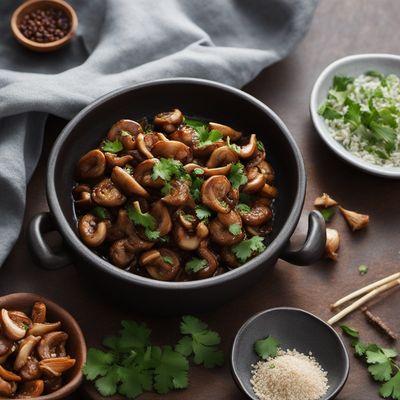
Hakka-style Garlic Mushrooms
Savory Hakka Mushroom Delight
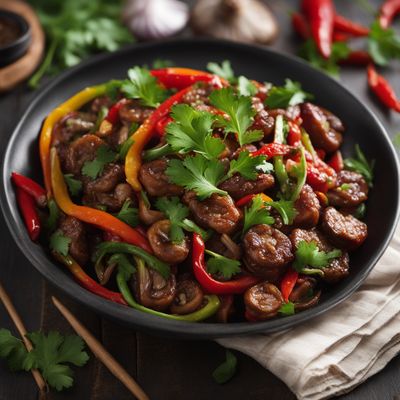
Hakka-style Salsiccia Stir-Fry
Savory Hakka Sausage Delight
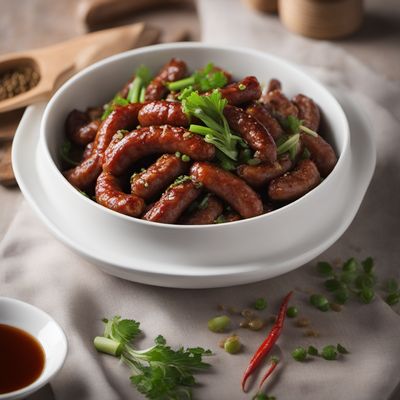
Hakka-style Sausage Lung
Hakka-inspired Spiced Lung Sausage

Hakka-style Strazzata
Savory Hakka Egg Pancake

Hakka Glorified Rice
Hakka Fusion Delight: Glorified Rice with a Twist

Hakka-style Spicy Fish Curry
Fiery Hakka Fish Delight
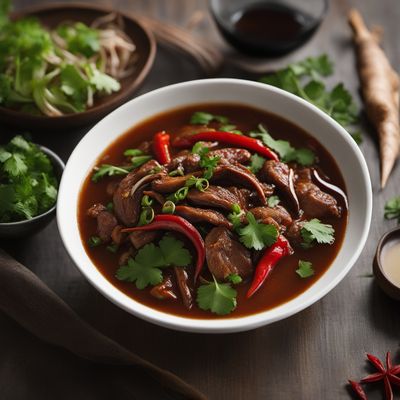
Hakka Rat Stew
Savory Hakka Rat Stew: A Delightful Fusion of Flavors

Hakka-style Braised Anchovies
Savory Hakka Anchovy Delight

Hakka-style Black Fruit Cake
Indulge in the Richness: Hakka-style Black Fruit Cake

Hakka-inspired Stroopwafel
Hakka Fusion Delight: Crispy Stroopwafel with a Twist

Hakka-style Spiced Bread
Savory Spice Infused Bread: A Hakka Delight

Hakka-style Ramadan Bread
Savory Hakka Delight: Ramadan Bread with a Twist